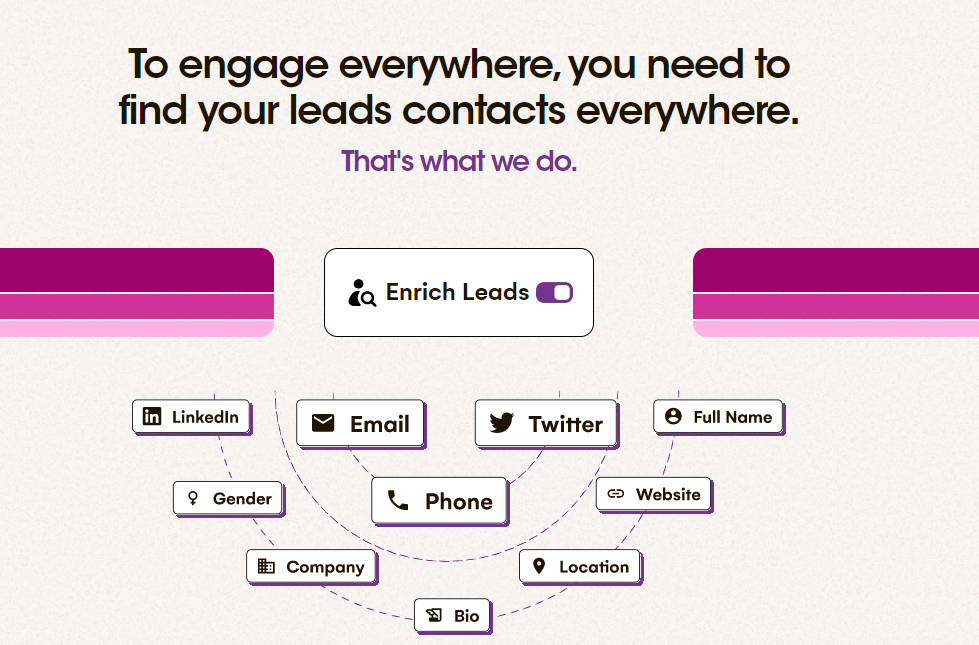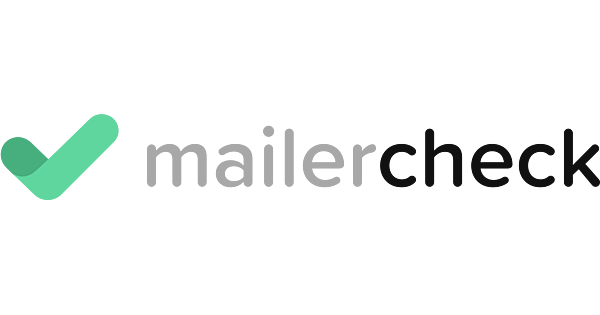Table of contents
Last time, we went on about what soft bounces are, why they happen, and how to deal with them. This time, we’re going to take a look at hard bounces.
Hard bounces are the nightmare of every growth marketer or salesperson who cares about their company’s reputation.
Having to deal with such an issue considerably impacts your B2B email deliverability and hinders your business development
But what are hard bounces? What causes them? And how can you avoid and/or fix them?
These are the questions we’re going to answer in this brief article.
What is a hard bounce?
Simply put, a hard bounce is an email that is permanently undeliverable. Meaning that there is no way for your email to reach its destination.

It can happen for a variety of reasons, from an invalid email address to the recipient’s server blocking your emails.
In any case, you should take hard bounces seriously as they are a direct indication that something is wrong with the recipients’ email addresses or your own email reputation.
Quick Tip💡
Sometimes, bounces appear as soft bounces but are, in fact, hard bounces. This happens when email servers give wrong error codes — something you need to pay close attention to.
What causes a hard bounce
An email typically hard bounces when you type in a nonexistent email address.
If you’re using LaGrowthMachine, you know for a fact that this is almost impossible to happen as our lead enrichment tool ensures that all email addresses are valid before adding them to your database.
Brace yourselves, this is about to get technical!

We send out a ping to the server, inquiring “is this email in your database?” and then wait for an answer -so to speak.
If the server is set up to use a “Catch-All” configuration, it will literally “catch everything”, meaning it will always reply “Yes, the email is indeed in my database”.
The problem with this is that even if the email address doesn’t exist, it will still respond positively. So you’d be sending emails to an address that simply isn’t there, thus causing a hard bounce.
Consequently, if the server is in catch-all mode, we won’t be able to validate the email address.
We designed LaGrowthMachine to never give an invalid email address, so in the case of catch-all servers, we won’t provide one, unless you specifically ask for it.

Otherwise, a recipient’s Internet Service Provider (ISP) can reject your email for a variety of reasons.
These include:
- Invalid Email Address: A hard bounce can be caused by an email address that does not exist or is invalid and cannot be delivered to the recipient.
- Blocked Domain/IPs: Your domain has been blocked by the ISP for whatever reason.
- Spam Filters: Most ISPs have spam filters configured specifically to detect and reject certain types of suspicious content before they can reach the inbox of their customers.
- Unauthorized Sender Errors: The address is unauthorized with the ISP’s mail server due to security reasons.
- The email address is associated with a closed account: The account has been closed, deleted, or suspended.
- The email domain name does not exist: It does not exist or is inactive.
Why are hard bounces bad for your email campaign?
Hard bounces are a sign that something is very wrong with your email campaigns, and your email lead generation will suffer if you do not address them quickly.
Not only do they directly cause your deliverability rates to suffer, but they also give ISPs an indication that your emails may contain malicious content.
This means that ISPs will start to reject your emails even if they don’t contain any malicious content. Not to scare you, but it also means damaging your domain and sender score.
Long story short, you should never take hard bounces lightly and you need to address them as soon as you notice them.
Enough with the horror stories, let’s look at how to avoid hard bounces.
How can I prevent hard bounces?
First and foremost, If you ever receive a hard bounce or spam alert, pause your email campaign to those addresses immediately and investigate further.
Otherwise, the most effective way to prevent hard bounces is to ensure that the whole of your email list is healthy and up-to-date.
This means checking for any errors or invalid emails, removing them from your list and making sure that all addresses are accurate.
But how do you do that you might ask? Easy.
Use an email verification tool
By using an email verification tool to validate your leads’ emails, there are plenty of them currently on the market:
- MailerCheck: This email verifier uses a combination of multiple tests and algorithms to quickly validate large databases of emails. They offer: Bulk and single email verification, Key customer data, Real-time verification API, and more
- ZeroBounce: Join corporations such as TripAdvisor, AllState, and Comodo and invest in this powerful tool that utilizes multiple verification processes and has a wide range of integrations. It offers features such as: Bulk verification, Real-time API, SMTP Validation, and more.
- NeverBounce: One of the best email verification services out there, Neverbounce offers a powerful API that can process millions of emails in minutes. It also features: Email address syntax checks, Instant bounce analysis, and Bulk email verification.

These are just three of the many available options out there that offer great features and can help you validate your leads’ email addresses and reduce the chances of hard bounces.
Take care of your sender score and reputation
Another great way to prevent hard bounces is by taking care of your sender score and reputation.
You can damage your reputation if you’re not careful. ISPs can start to reject your emails if they think that you’re sending malicious content or spammy messages.
Be sure to create your own custom email domain and follow best practices and start by following the CAN-SPAM Act.
This is a law that requires marketers to obtain permission from recipients before sending promotional emails.
Also, make sure to use authentication, encryption protocols, and the best time for sending emails. This helps ISPs recognize that your email is coming from a trusted source and not a malicious one.
Finally, keep in mind that ISP blocking can cause hard bounces so it’s important to monitor your domain closely. If you notice any blocks, contact the ISP to resolve them quickly.
Develop a process for tracking and removing hard bounces
Another simple solution is to collaborate with your support department to develop a process for tracking and removing hard bounces from your email list.
For instance, create a flagrant notification system that flags any emails that hard bounce, and then have your support team manually review them to ensure they’re not incorrectly flagged.
Once they’re identified as hard bounces, you can then remove the corresponding emails from your list and prevent further emails from being sent to them.
Go multichannel

The beauty of modern lead marketing is that you can now reach your customers through multiple channels, we’ll go even as far as to say it’s a must.
Invest in a multichannel automation tool such as LaGrowthMachine which will enable you to send automated campaigns via LinkedIn, Email, and Twitter.
This way, even if one channel fails (in this case email) you’ll still be able to reach your customers via other channels and reduce the chances of hard bounces.
We’ve even created a specific Action block that deals with this:
Key takeaways
If you’re not taking steps to avoid hard bounces, you’re effectively disregarding valuable leads and, more importantly, your sender reputation. Implementing a few best practices can help you go a long way with your email marketing.
Using an email verification tool is a great start and ensures that your leads’ email addresses are valid and reliable.
When all is said and done, make sure to develop a process for tracking and removing hard bounces.
Finally, don’t forget about multichannel campaigns. Utilizing multiple platforms helps you reduce the chances of hard bounces and ensure that your emails reach their intended recipients.
And as always, if you need a little help getting started, we’re always here to help you out.
Get in touch with us today!


Comments